Let’s dive into the fascinating and sometimes downright weird world of North America’s wildlife. You might think you know all there is to know about the creatures in your backyard, but trust me, there’s always something new and bizarre to learn. From the quirky habits of common animals to the mind-boggling abilities of the lesser-known species, get ready for some wildlife wonders that might just leave you scratching your head in amazement.
1. The Squirrel’s Secret Stash
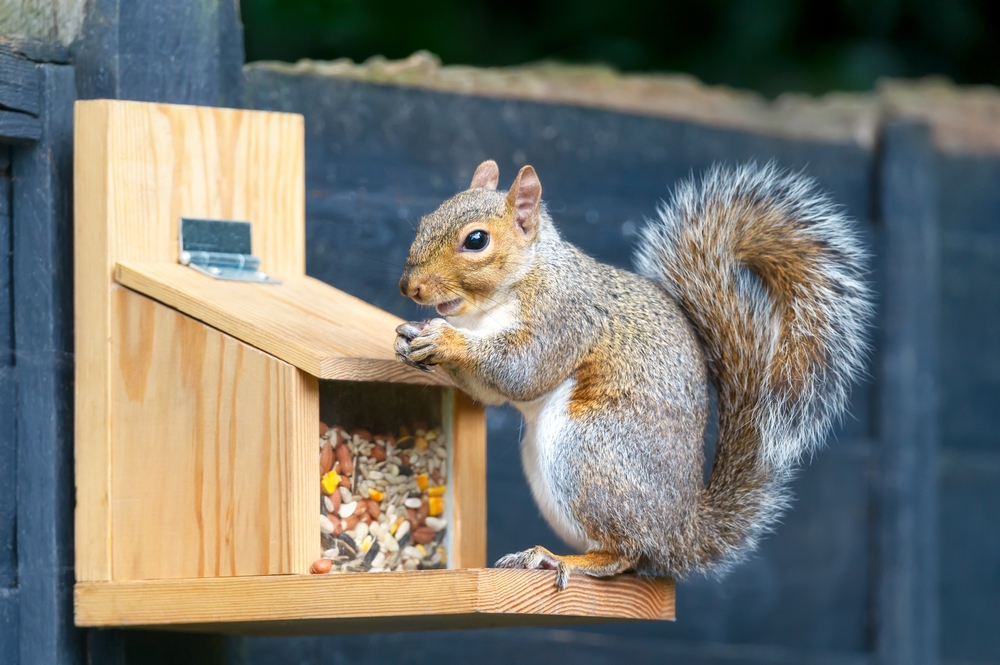
You might think squirrels are just fuzzy little creatures busy collecting nuts, but there’s a lot more to their antics than meets the eye. These crafty critters are known for their complex caching behavior, which involves hiding or burying their food for later use. What’s truly fascinating is their ability to remember the location of hundreds of nut caches, even months after burying them. According to the National Wildlife Federation, they use a combination of spatial memory and environmental cues to locate their hidden treasures. Scientists have discovered that they also engage in deceptive caching to throw off potential thieves, which means they pretend to bury a nut in one spot while actually hiding it elsewhere. It’s basically the animal kingdom’s version of a strategic bluff.
Furthermore, squirrels have been observed using landmarks to jog their memory, such as specific types of trees or other notable features in their habitat. This impressive memory skill isn’t just for survival; it helps them maintain a balanced diet by ensuring they have access to both their long-term and short-term food supplies. Interestingly, not all squirrels hoard nuts. Some species, like the red squirrel, create large, single-meal caches called “middens,” which can contain thousands of pine cones. So, the next time you see a squirrel frantically digging in your yard, know that you’re witnessing a tiny mastermind hard at work.
2. Beavers: Nature’s Engineers
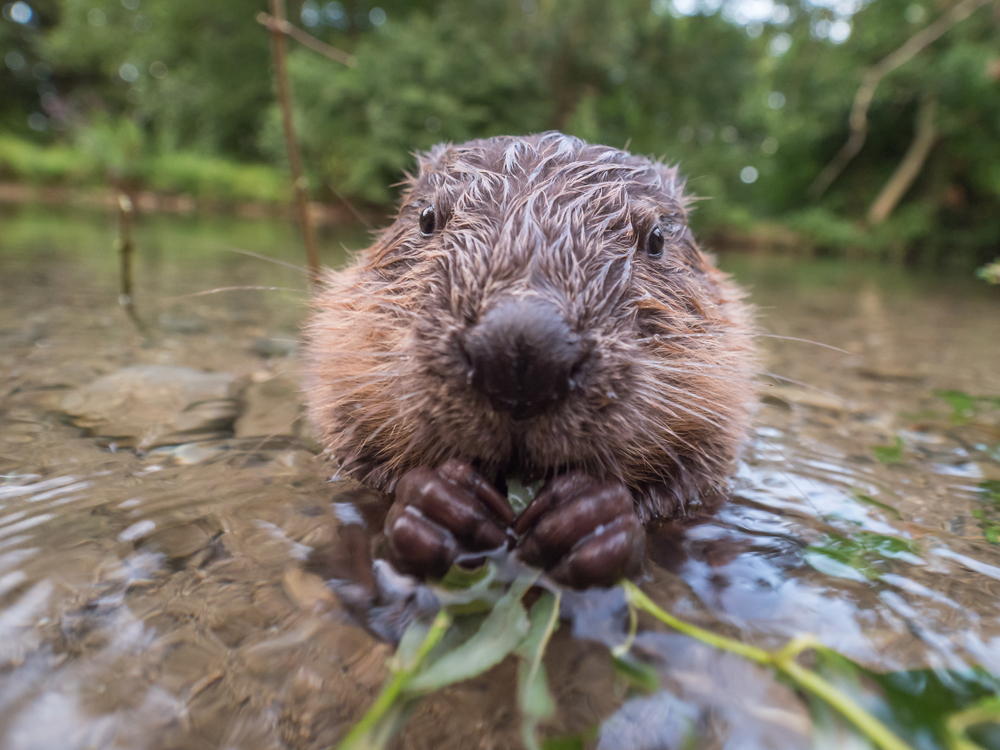
We all know beavers are famous for their dam-building skills, but did you know they can completely transform ecosystems with their construction projects? National Geographic highlights that by building dams, beavers create ponds that serve as habitats for various species, thereby increasing biodiversity in the area. These ponds help filter out pollutants, improve water quality, and recharge groundwater supplies. Essentially, beavers are nature’s engineers, playing a crucial role in maintaining healthy ecosystems. Their work can even mitigate the effects of drought by storing water in their ponds.
Beavers are also known to be highly adaptable, adjusting their building techniques based on the environment. For instance, in areas with fast-flowing water, they construct more robust dams, while in slower streams, they might build multiple smaller dams. Their lodges, which serve as homes, are complex structures featuring underwater entrances for protection against predators. Interestingly, beavers communicate through vocalizations and tail-slapping on water to warn others of danger. So, if you come across a beaver dam, appreciate the ecological wonder and intricate planning that went into its creation.
3. The Mysterious Monarch Migration
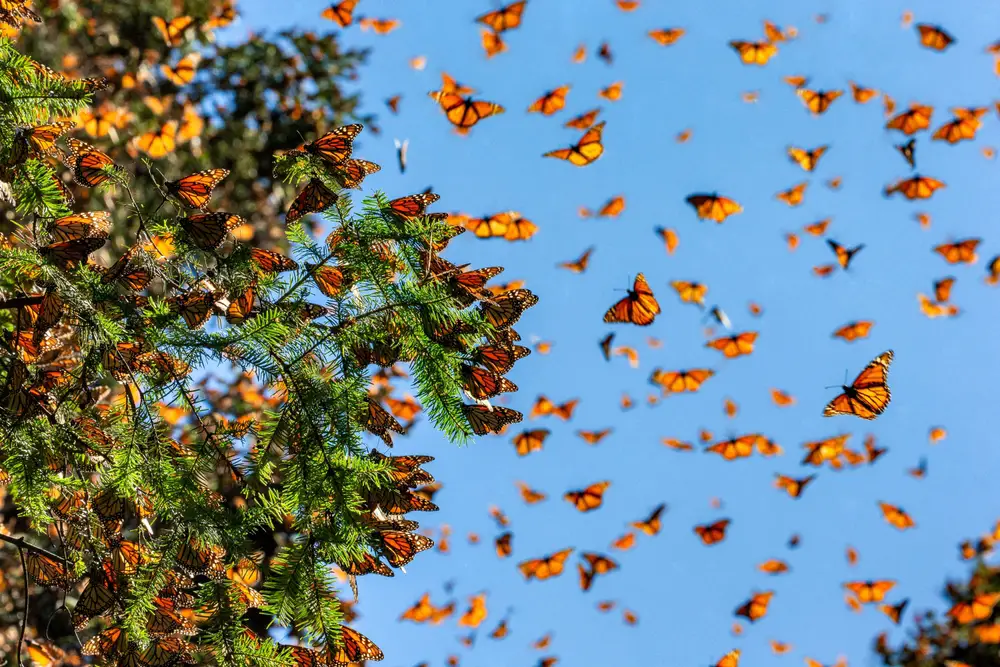
Monarch butterflies are not just pretty insects fluttering around your garden; they are part of one of the most astounding migratory patterns in the animal kingdom. Every fall, millions of monarchs embark on a journey spanning thousands of miles from North America to central Mexico, where they spend the winter. What’s truly remarkable is that no single butterfly completes the entire round trip. It takes about four generations for the full migration cycle, with each generation playing its part in the journey.
The monarchs use a combination of environmental cues like the sun’s position and Earth’s magnetic field to navigate their way. Scientists are still unraveling the mysteries of how these tiny creatures, with a brain the size of a pinhead, manage such an incredible feat. Along their route, they rely on nectar from flowers for sustenance, making conservation efforts for their migratory paths crucial to their survival. So, the next time you see a monarch fluttering by, give it a silent cheer for being part of a journey that spans continents and generations.
4. The Armadillo’s Bizarre Defense Mechanism
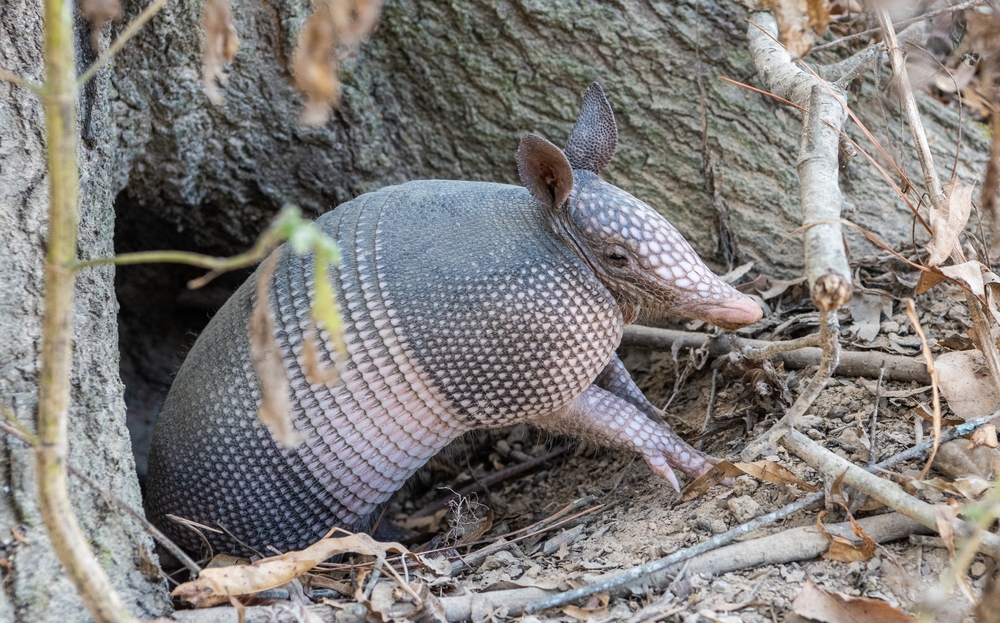
Armadillos are often seen as unusual creatures, but their defense mechanisms are truly fascinating. The nine-banded armadillo, found in North America, is known for its ability to curl up into a ball to protect itself from predators. However, not every armadillo species has this ability; it’s unique to a few. When threatened, they don’t just rely on their armored shells; they also have a peculiar habit of jumping vertically into the air, which can startle predators and give them a chance to escape.
In addition to their physical defenses, armadillos have a keen sense of smell, which they use to detect predators and find food underground. They primarily feed on insects, particularly ants and termites, using their long tongues to gather their prey. Armadillos are also interesting because they are one of the few animals that can contract leprosy, and they have been studied for this reason. Their unique traits make them one of the most intriguing creatures to encounter in the wild.
5. The Elusive Lynx’s Snowshoe Advantage
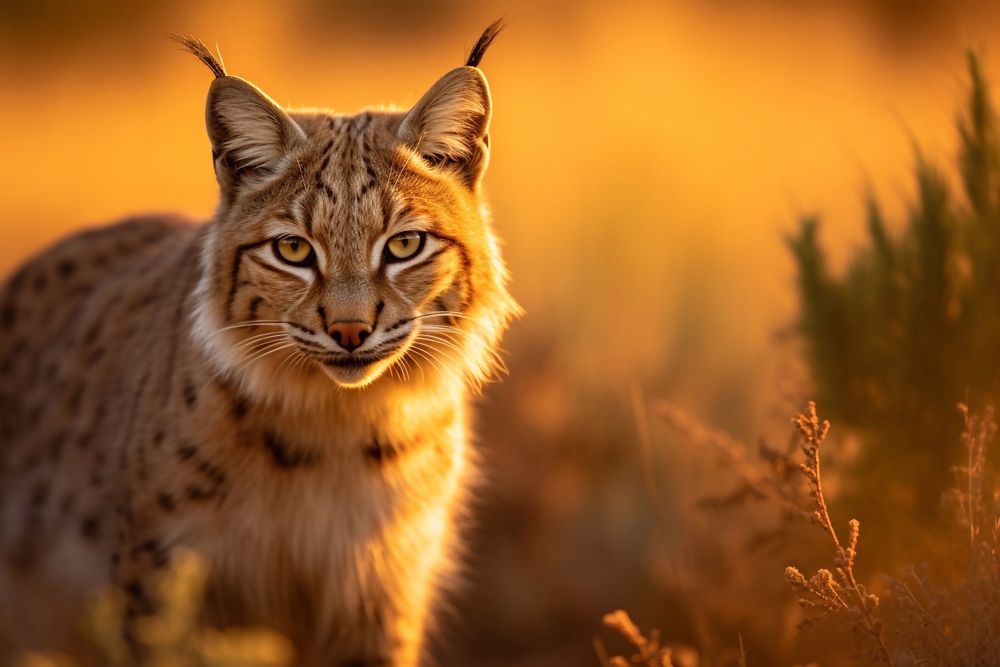
The Canada lynx, with its tufted ears and fluffy tail, is a fascinating feline adapted perfectly for life in snowy landscapes. One of its most remarkable adaptations is its oversized paws, which act like natural snowshoes, allowing it to move easily over deep snow. This gives the lynx a significant advantage when hunting its primary prey, the snowshoe hare. Its powerful paws not only help it move stealthily but also aid in silently stalking and pouncing on unsuspecting prey.
Lynx are solitary animals, and their elusive nature makes them difficult to spot in the wild. They are primarily nocturnal and have keen eyesight and hearing, which they use to detect prey in low-light conditions. Despite their adaptability, lynx populations are sensitive to changes in their environment, particularly habitat loss and fluctuations in prey populations. Conservation efforts are crucial to maintaining the delicate balance in their ecosystems. So, if you ever have the rare opportunity to glimpse a lynx in the wild, consider it a special moment with one of North America’s most enigmatic predators.
6. The Wily Ways of the Coyote
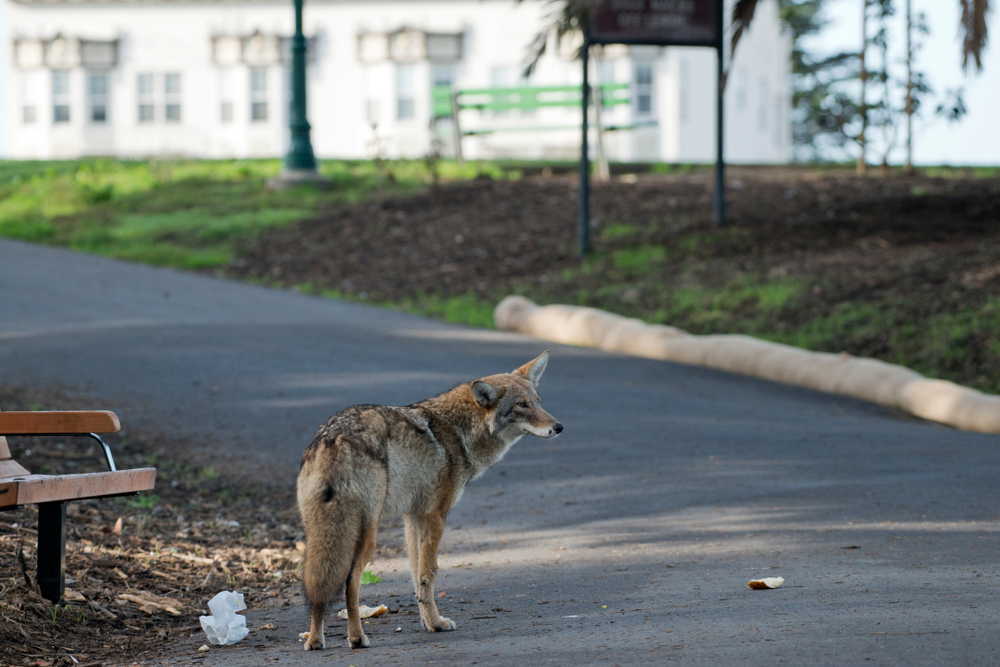
Coyotes are incredibly adaptable creatures found in a variety of habitats across North America. Known for their cunning and intelligence, they have learned to coexist with humans and often thrive in suburban environments. Coyotes communicate using a complex system of vocalizations, including howls, yips, and barks, which can be heard echoing through the night. These sounds serve multiple purposes, from defining territory to coordinating group activities and even signaling danger.
Coyotes are opportunistic feeders with a diet that includes small mammals, birds, fruits, and even garbage, making them capable of surviving in diverse environments. Their adaptability is a testament to their resilience, as they continue to expand their range despite human encroachment. Coyotes often form family units and work together to hunt and rear their young, demonstrating a high level of social structure and cooperation. So, the next time you hear a coyote’s howl, remember that you’re listening to one of nature’s most resourceful survivors.
7. The Opossum’s Unlikely Talent

Opossums, often recognized for their “playing dead” act, have another unique talent that’s less well known. These nocturnal marsupials possess a remarkable resistance to snake venom, allowing them to prey on venomous snakes like rattlesnakes without fear. This immunity is due to a specific protein in their blood that neutralizes the toxins, providing them with a significant survival advantage. Opossums have been studied for their potential to lead to the development of new antivenoms for humans.
In addition to their venom resistance, opossums are known for their role in controlling tick populations. A single opossum can consume thousands of ticks in a season, making them invaluable in reducing the spread of tick-borne diseases. They are also adaptable feeders, consuming a wide range of foods from fruits and vegetables to insects and small animals. So, while they may have a reputation for being pests, opossums actually play a crucial role in maintaining ecological balance.
8. The Peculiar Plight of the Prairie Dog
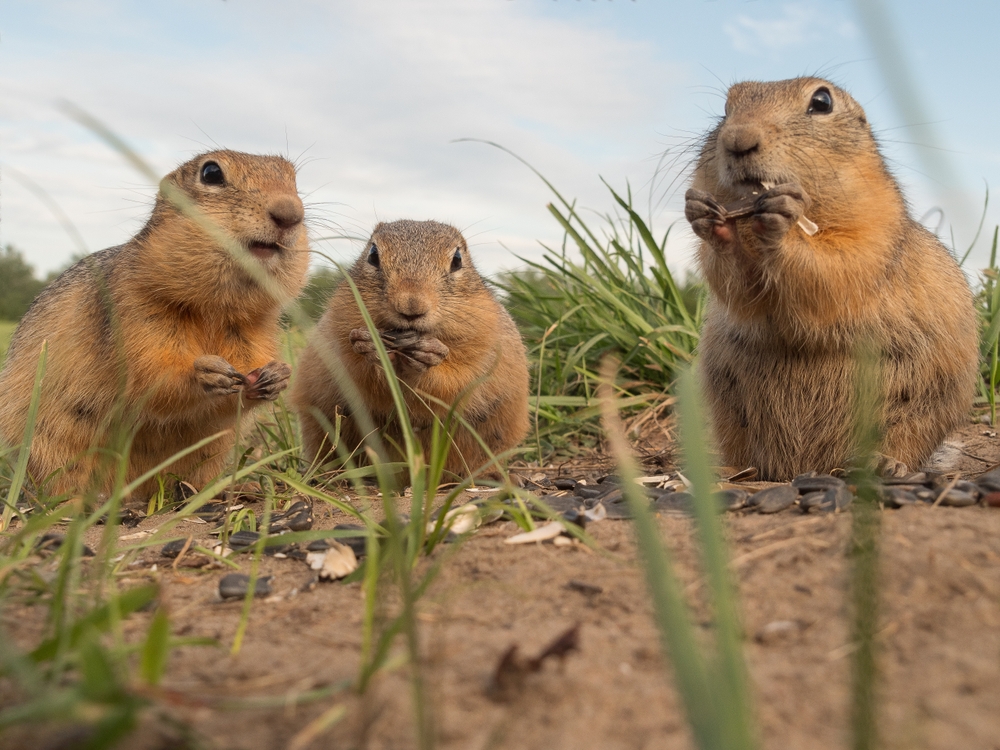
Prairie dogs are fascinating rodents known for their intricate underground burrow systems, which can span miles and house entire colonies. These burrows are highly structured, with designated areas for sleeping, nursing, and even waste. The social structure of prairie dog communities is complex, with a high level of cooperation and communication. They use an extensive range of vocalizations to warn each other of danger and even have specific calls for different types of predators.
Unfortunately, prairie dogs face numerous threats from habitat loss and disease to human persecution. Despite their ecological importance, they are often viewed as pests and targeted for eradication. Prairie dogs play a crucial role in their ecosystems by aerating the soil, which promotes plant growth, and serving as prey for a variety of predators. Conservation efforts are vital to protect these remarkable creatures and the ecosystems they support. So, next time you see a prairie dog popping its head up, take a moment to appreciate the sophisticated society thriving beneath the surface.
9. Moose: The Giants of the Forest
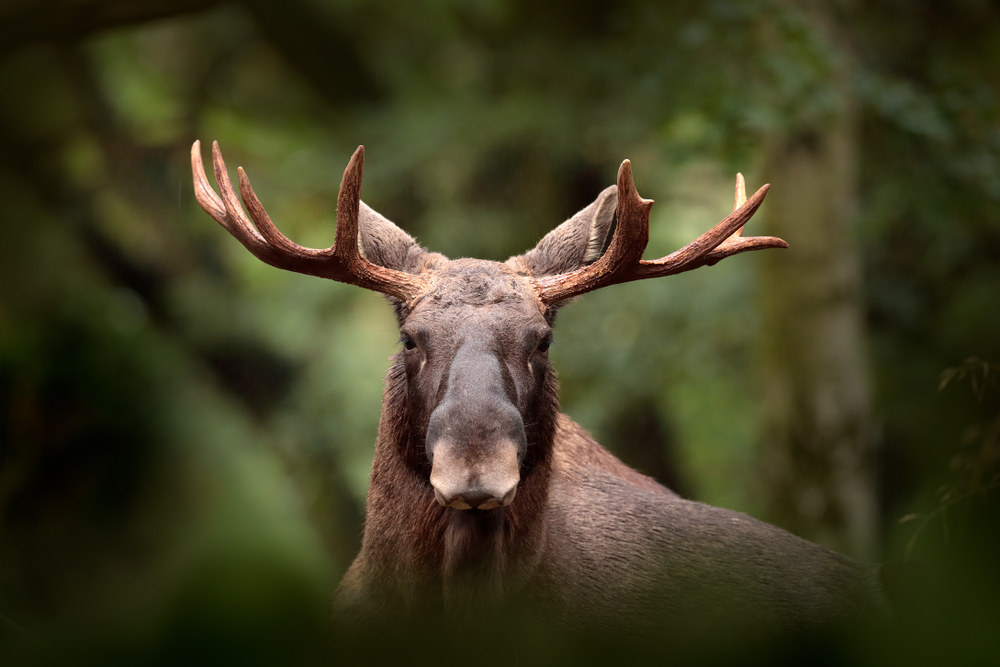
Moose are the largest members of the deer family and are truly the giants of North American forests. These majestic creatures are known for their impressive antlers, which can span up to six feet across. Despite their size, moose are excellent swimmers and can dive up to 20 feet underwater to feed on aquatic plants. They have long legs that help them navigate through deep snow and rough terrain with ease.
Moose are solitary animals, except during mating season, when males become more aggressive in their pursuit of females. Their diet primarily consists of vegetation, and they play a crucial role in maintaining the health of forest ecosystems by promoting plant diversity. Moose populations are sensitive to climate changes, as warmer temperatures can lead to heat stress and increased parasite loads. Conservation efforts focus on protecting their habitats and ensuring sustainable population levels. Spotting a moose in the wild is a breathtaking experience and a reminder of the wilderness that still thrives in North America.
10. The Remarkable Resilience of the American Alligator
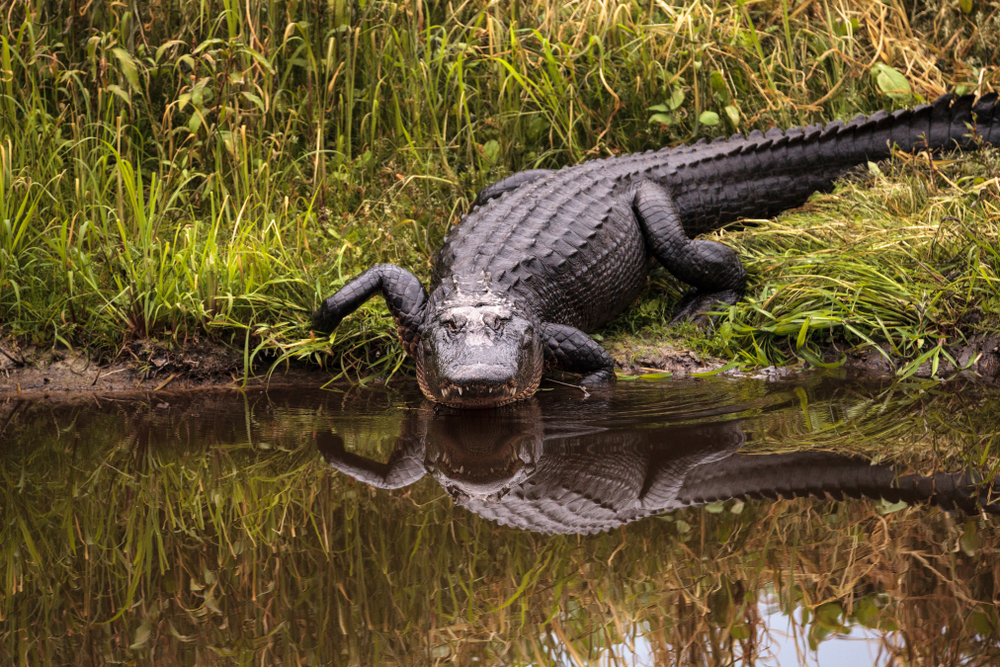
The American alligator is a true survivor, having outlived the dinosaurs and various environmental changes over millions of years. These formidable reptiles are found in the southeastern United States, primarily in freshwater environments like swamps and rivers. Alligators play a vital role in their ecosystems by creating “alligator holes” during dry seasons, which provide crucial water sources for other wildlife. They are apex predators, helping to control populations of prey species and maintain ecological balance.
Alligators have a unique ability to regulate their body temperature by basking in the sun or seeking shade in cooler waters. They are also incredibly strong swimmers, using their powerful tails to propel themselves swiftly through the water. Despite their fearsome reputation, alligators are generally shy around humans and attacks are rare. Conservation efforts in the 20th century brought the American alligator back from the brink of extinction, showcasing the power of protective measures and habitat preservation. Encountering an alligator in the wild is a reminder of the ancient lineage and resilience of these incredible creatures.
11. The Bat’s Buzzing Buffet
Bats are often misunderstood creatures, but they play a crucial role in maintaining ecological balance. North America’s insect-eating bats are essential for controlling populations of nocturnal insects like mosquitoes and moths. A single bat can consume thousands of insects in one night, providing natural pest control that benefits agriculture and reduces the spread of insect-borne diseases. Bats use echolocation to navigate in the dark, emitting high-frequency sounds and listening for the echoes to locate their prey.
In addition to insect control, some bat species are important pollinators and seed dispersers, contributing to ecosystem diversity and plant reproduction. Unfortunately, bats face numerous threats, including habitat loss and the deadly White-nose Syndrome, a fungal disease that has devastated populations across North America. Conservation efforts focus on protecting roosting sites and raising awareness about the importance of bats to our ecosystems. So, the next time you see a bat swooping through the sky at dusk, appreciate the vital role it plays in keeping our world in balance.
12. The Adaptable Nature of the Raccoon
Raccoons are incredibly adaptable creatures known for their intelligence and resourcefulness. Found throughout North America, these nocturnal mammals thrive in both wild and urban environments. Their distinctive black mask and ringed tail make them easily recognizable, but it’s their problem-solving skills that truly set them apart. Raccoons are often dubbed “nature’s bandits” due to their knack for getting into garbage cans and other food sources.
Raccoons have a diverse diet that includes fruits, nuts, insects, small animals, and human leftovers, allowing them to adapt to different habitats easily. They are excellent climbers and swimmers, using their dexterous front paws to open containers and manipulate objects. Raccoons communicate through a variety of vocalizations, from purrs and whistles to growls and screams, displaying a complex social structure. Despite their reputation as nuisances, raccoons play a role in seed dispersal and controlling insect populations. So, if you encounter a raccoon rummaging through your trash, remember that you’re dealing with one of nature’s cleverest creatures.
13. The Enigmatic Echidna
The echidna, also known as the spiny anteater, is a fascinating monotreme native to North America. These peculiar creatures are one of only two types of egg-laying mammals, the other being the platypus. Echidnas are covered in spines and have a long, sticky tongue used to capture ants and termites, their primary food source. Despite their spiky appearance, they can curl into a ball for protection, much like a hedgehog.
Echidnas have an unusual method of reproduction, laying a single leathery egg that hatches after about ten days. The young echidna, or puggle, is then carried in the mother’s pouch until it develops spines. Echidnas are solitary animals with a keen sense of smell, which they use to locate food and navigate their environment. Their unique physiology and behaviors make them one of the most intriguing mammals to study. So, if you ever have the chance to see an echidna, take a moment to marvel at this remarkable evolutionary anomaly.
14. The Woodpecker’s Pecking Prodigy
Woodpeckers are renowned for their rapid, drumming beaks, but there’s much more to these birds than their pecking prowess. Found throughout North America, woodpeckers have specialized skull structures that prevent brain damage when they hammer away at trees. Their tongues are uniquely adapted, often wrapping around their skulls when not in use, allowing them to extract insects from tree bark with precision.
These birds play a crucial role in forest ecosystems by controlling insect populations and creating nesting sites for other cavity-nesting species. Their drumming serves multiple purposes, from foraging to communication and even attracting mates. Woodpeckers are incredibly diverse, with different species adapted to a wide range of habitats, from dense forests to arid deserts. Conservation efforts focus on preserving their natural habitats and understanding their ecological importance. So, the next time you hear the rhythmic tapping of a woodpecker, appreciate the impressive adaptations behind the sound.
15. The Slow-Moving Sloth Bear of North America
The sloth bear, despite its name, is not related to sloths, but it does have some unusual traits that set it apart from other bear species. Found in the forests of North America, sloth bears have long, shaggy fur and a distinctive white chest mark. They are primarily insectivorous, using their long, flexible lips to suck up termites and ants from their mounds, often aided by their powerful claws to tear open nests.
Sloth bears have a unique foraging behavior, making loud, vacuum-like sounds as they feed, which is quite different from the silent hunting tactics of other bears. They are mostly nocturnal and are known for their slow, deliberate movements. Despite their apparent lethargy, sloth bears are excellent climbers and can hold their own against predators. Conservation challenges include habitat loss and human-wildlife conflict, making efforts to protect these fascinating creatures essential. Encountering a sloth bear in the wild is a rare and special experience, showcasing the diversity of North America’s wildlife.
I hope you found this journey through North America’s wildlife both informative and entertaining! From the strategic squirrel to the slow-moving sloth bear, there’s always something new to discover about the amazing creatures that share our world.
